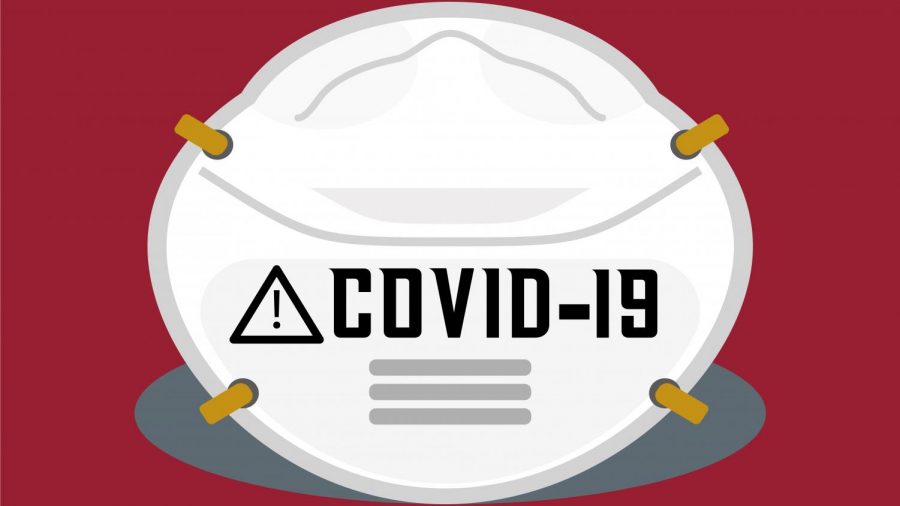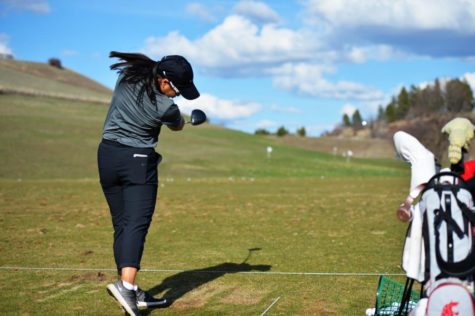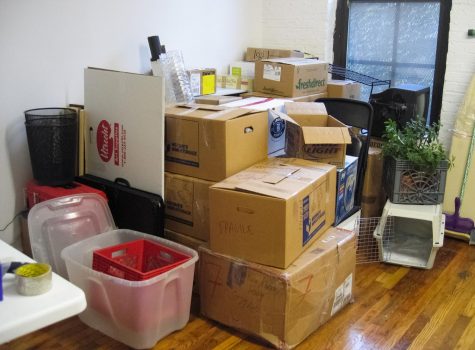EDITORIAL BOARD: WSU values in-person experience more than student safety
WSU plans to continue in-person learning; omicron variant affecting students, professors; no change being made
January 27, 2022
Within the last week, Whitman county has added over 1,000 positive COVID-19 tests to the already high number of cases.
The Office of Provost and WSU Environmental Health and Safety would not give the exact number of students and professors who have tested positive for COVID-19.
WSU continues to plan to be in-person for the remainder of the semester, Phil Weiler, vice president of marketing and communications, said.
“We are currently seeing a spike, but we have crested and will start to see a drop in cases within the next few weeks,” Weiler said.
Washington state has a strict mask policy enforced, and WSU recently announced that students should be wearing KN95 or N95 masks rather than disposable or cloth masks, Weiler said.
WSU is unable to keep up with contact tracing, as many students are taking at-home tests rather than tests at Cougar Health Services or pharmacies across the Palouse, Weiler said.
“Whitman county is one of the last counties in Washington to do contact tracing, but most likely will be slowing down with it, as they are overwhelmed with cases and at-home tests,” Weiler said.
Despite all of this, COVID-19 is raging across campus — students and professors are being impacted heavily by the virus.
CO2 levels are higher in classrooms than the CDC recommends, based on a study conducted by civil engineering professor Von Walden.
The CDC recommends that rooms during the pandemic be below 800 parts per million volume, he wrote in an email.
“I have been monitoring two classrooms, Sloan 161 and Wilson-Short 13,” Walden wrote. “Sloan’s levels have been between 900-950 ppmv. Wilson-Short has climbed above 1400-1600 ppmv.”
Walden has been opening the Wilson-Short window during class time to help with ventilation, dropping the ppmv to around 900. Unfortunately, Sloan 161 does not have a window, so he cannot help with the ventilation, he said.
CO2 levels may not seem like a big part of COVID-19, but the higher the number is, the less ventilation the room has, which leads to a higher number in transmissions.
Many students and professors have been testing positive — Matthew Loveless, WSU broadcast professor, tested positive for COVID-19 and had to quickly restructure his class.
“We’re very fortunate to have the resources we had during the pandemic, and I was able to transition to online easily,” Loveless said.
His class sizes are relatively small, and students were very understanding and adapted to the change quickly.
One of Loveless’s students said they had to get a negative test to go back to school.
As the omicron variant is highly transmissible, their roommate, Breana Ramirez, also had to quarantine until they received a negative test result.
Ramirez has been having a difficult time reaching out to their professors and making accommodations due to their situation.
They reached out to one professor and TA, and never heard back from them. They missed an entire week of classes due to the required quarantine time, and do not know if they can make up for their missed assignments and labs.
“Nine out of 10 professors are willing to accommodate students who are dealing with the virus, and need to find a hybrid way of learning,” Weiler said.
That does not seem to be the case for Ramirez, and other students across campus.
One student in Japanese 101 contracted COVID-19, and has to be quarantined for five days. She said that students were joking around in the class, saying they hope their test comes back negative. This means that students were coming into classrooms knowing they might possibly have COVID-19 and spreading it to others.
Hybrid and in-person classes are an option for students, Weiler said. Faculty members understand that things happen, and will help students with any personal needs.
“Reach out to your professor and they will work with you,” Weiler said.
One student said that one of their professors only has three COVID-19 days they can use as an excuse to miss class. This is only if you have a positive test, but even if you are sick with a cold or the flu, you cannot use this replacement and will not receive an excused absence.
Another one of her professors said the department head for Human Development already told professors that they are not allowed to have a hybrid option for students, and they must be in-person.
With the CDC guidelines, a person must quarantine for five days before returning back to work or school. If a person has classes three days a week, they have already hit the maximum “sick days” they can use. This will inevitably have a drastic affect on their grade.
Her other courses have already offered hybrid options for the next week to put student safety above worrying about meeting class attendance requirements.
WSU does not plan on making hybrid classes a school-wide requirement. Hybrid courses are twice the work for faculty. Zoom was not the greatest, as it was not as interactive for students, Weiler said.
Twice the work for the safety of students seems like the better option for WSU.
Even with the high vaccination and booster rate across campus, omicron is extremely contagious and chances of students getting it are high.
Why does our administration not take action to prevent this virus from spreading? Why is our administration putting us at risk?
WSU wants to have a robust in-person experience.
“Students told us their mental health wasn’t the best during remote learning. We take that highly into consideration,” Weiler said. “That also means with in-person learning, we plan on continuing in-person events like guest speakers, sporting events and evening events.”
If students want WSU to return to a normal lifestyle, WSU administration needs to make the step to offer a hybrid learning experience for students to prevent the spread of COVID-19 and the omicron variant.
If other universities and colleges can follow strict COVID-19 restrictions, why can’t WSU? Columbia Basin College has spread out desks and seats so students do not sit close together, they have daily check-in protocols that include temperature checks and most of their classes are offered online.
WSU must follow that example to create a safer environment for students, so that we can return more quickly to everyone’s preferred method of learning: in the classroom.





















Claudia • Jan 27, 2022 at 2:33 pm
please note that the CDC guideline for finishing quarantine after 5 days is only if that person is no longer experiencing any symptoms